Achilles tendonitis is a common condition that causes pain along the back of the ankle. The Achilles tendon is the largest tendon in the body. It connects the calf muscle with the base of the heel, and it is used when walking, running or jumping.
The Achilles tendon can withstand great stresses, and this is why it’s prone to tendonitis. Tendonitis, to be simplified is the inflammation of a tendon. Inflammation is the natural response to an injury, often accompanied with pain, swelling and irritation.
There are two types of Achilles tendonitis.
Non-insertional Tendonitis
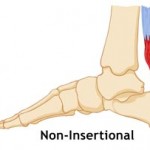 Non-insertional tendonitis is the fibers in the middle of the tendon becoming inflamed. This is usually found in younger people who are very active. There is usually swelling around the area that looks like a bump on the back of your ankle. Calcification of the tendon may also be present which will make the tendon feel hard.
Non-insertional tendonitis is the fibers in the middle of the tendon becoming inflamed. This is usually found in younger people who are very active. There is usually swelling around the area that looks like a bump on the back of your ankle. Calcification of the tendon may also be present which will make the tendon feel hard.
Insertional Tendonitis
 Insertional tendonitis involves the tendon nearer to the calcaneus (heel bone). This form of tendonitis may also be accompanied with bone spurs and calcification of the tendon. Insertional tendonitis can occur at any time, even in patients who are not physically active.
Insertional tendonitis involves the tendon nearer to the calcaneus (heel bone). This form of tendonitis may also be accompanied with bone spurs and calcification of the tendon. Insertional tendonitis can occur at any time, even in patients who are not physically active.
Do You Have Achilles Tendonitis?
Common symptoms of Achilles tendonitis are:
- Pain and stiffness along the Achilles tendon in the morning
- Pain along the tendon or back of the heel that worsens with activity
- Severe pain the day after exercising
- Calcification of the tendon
- Bone spurs
- Swelling that is persistent and gets worse throughout the day
Feel Better Sooner!
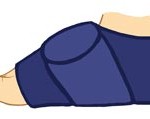 Ice and cold compression are always great ways to help reduce inflammation quickly. Buy a pair of crutches and stay off your feet! Just like bones being fractured – sprains are a fracture to the tendon and should be treated the same way. Alleviating most of the weight that’s bared on your foot during a day, by staying off of it, reducing movement will speed up the recovery process.
Ice and cold compression are always great ways to help reduce inflammation quickly. Buy a pair of crutches and stay off your feet! Just like bones being fractured – sprains are a fracture to the tendon and should be treated the same way. Alleviating most of the weight that’s bared on your foot during a day, by staying off of it, reducing movement will speed up the recovery process.
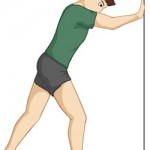 Pain permitting, light stretching of the foot muscles should be done to help prevent the muscles from tightening. Any form of stretching that doesn’t put any pressure on the calf muscle is okay. If you feel any pressure in the calf muscle, this stretch will re-injure the Achilles tendon. Stretching also helps with optimal blood flow. Optimal blood flow will send the perfect amount of nutrient rich blood to feed the muscles and help them heal faster. Don’t stretch if it hurts! Pain is a sign that you could be re-injuring yourself.
Pain permitting, light stretching of the foot muscles should be done to help prevent the muscles from tightening. Any form of stretching that doesn’t put any pressure on the calf muscle is okay. If you feel any pressure in the calf muscle, this stretch will re-injure the Achilles tendon. Stretching also helps with optimal blood flow. Optimal blood flow will send the perfect amount of nutrient rich blood to feed the muscles and help them heal faster. Don’t stretch if it hurts! Pain is a sign that you could be re-injuring yourself.
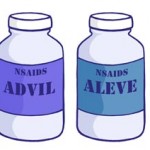 Pain relievers should only be taken when inactive. Using a pain reliever or anti-inflammatory to help you get through the day not only will cause you to injure yourself further, you won’t know that you’ve hurt yourself until the effects of the pills have worn off. It’s strongly recommended to “tough it out” during the day so that way you’re aware of what your tendon can handle.
Pain relievers should only be taken when inactive. Using a pain reliever or anti-inflammatory to help you get through the day not only will cause you to injure yourself further, you won’t know that you’ve hurt yourself until the effects of the pills have worn off. It’s strongly recommended to “tough it out” during the day so that way you’re aware of what your tendon can handle.
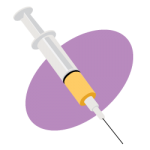 Corticosteroids are often recommended to help relieve pain and reduce inflammation, but the cons outweigh the pros by far. Yes, the steroid will help to reduce pain and inflammation – but it only lasts for two to six weeks. Some of the negative things that aren’t mentioned are that with every injection you run the risk of rupturing the tendon. Once the pain is “gone” you won’t know if you’re injuring yourself, and without the feeling of pain, you most likely will injure yourself!
Corticosteroids are often recommended to help relieve pain and reduce inflammation, but the cons outweigh the pros by far. Yes, the steroid will help to reduce pain and inflammation – but it only lasts for two to six weeks. Some of the negative things that aren’t mentioned are that with every injection you run the risk of rupturing the tendon. Once the pain is “gone” you won’t know if you’re injuring yourself, and without the feeling of pain, you most likely will injure yourself!
[…] bone spur (insertional tendonitis) […]
[…] Achilles Tendonitis […]